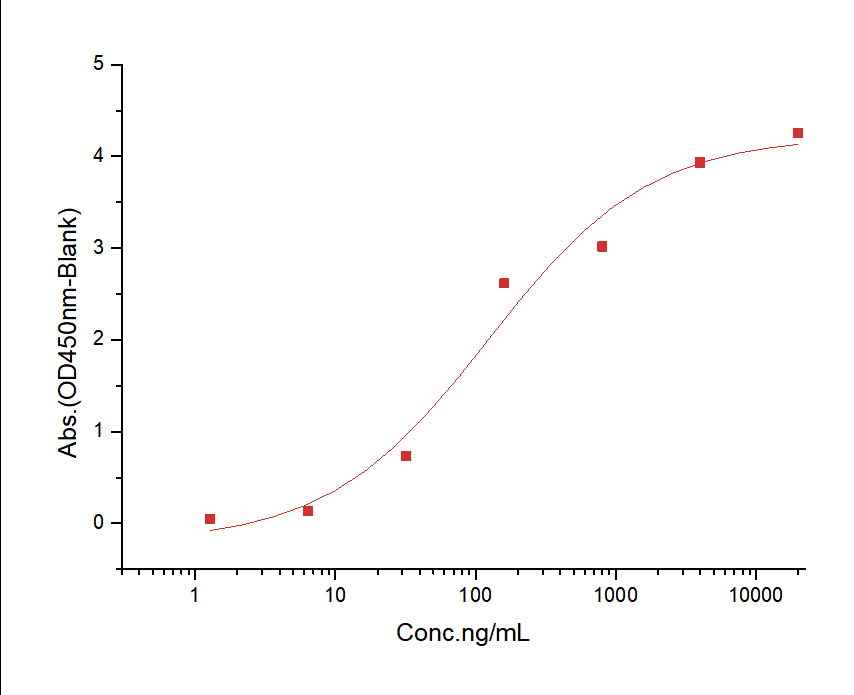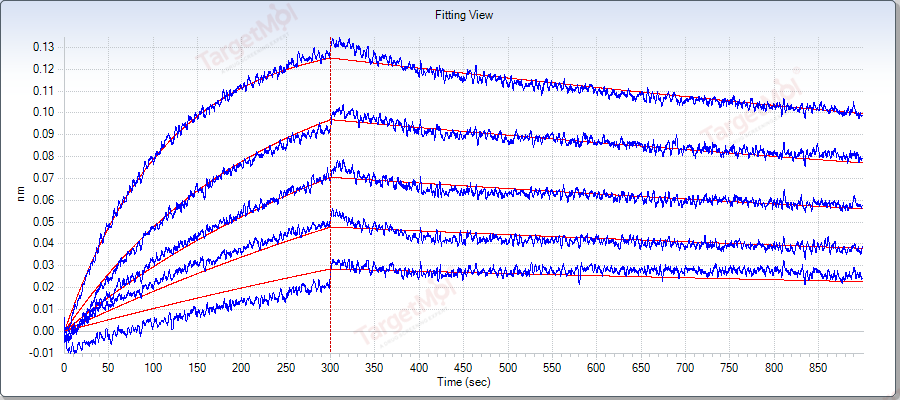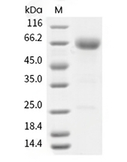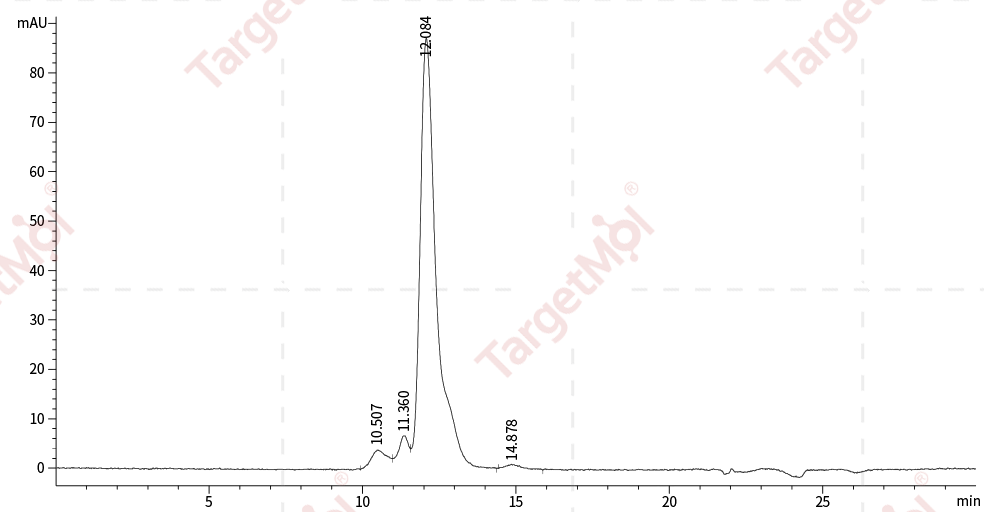Shopping Cart
- Remove All

Your shopping cart is currently empty

| Pack Size | Price | Availability | Quantity |
|---|---|---|---|
| 50 μg | $172 | In Stock | |
| 100 μg | $302 | 7-10 days | |
| 200 μg | $534 | 7-10 days | |
| 500 μg | $1,130 | 7-10 days |
| Biological Information | 1. Measured by its ability to bind Biotinylated Human PD-L1-His in a functional ELISA. 2. Measured by its ability to bind Biotinylated Human PD-L2-His in a functional ELISA. 3. Immobilized PD-1 Protein, Human, Recombinant (ECD, hFc Tag) at 2 μg/mL (100 μL/well) can bind PD-L2 Protein, Human, Recombinant (ECD, His Tag) , the EC50 is 45-280 ng/mL. 4. Labeled biotin to PD-1 Protein, Human, Recombinant (Fc Tag) by a certain molar ratio; Using the Octet RED System, the affinity constant (Kd) of PD-1 Protein, Human, Recombinant (Fc Tag), Biotinylated bound to Atezolizumab was 0.3 nM.   |
| Description | PD-1 Protein, Human, Recombinant (hFc) is expressed in HEK293 mammalian cells with hFc tag. The predicted molecular weight is 42.7 kDa and the accession number is A0A0M3M0G7. |
| Species | Human |
| Expression System | HEK293 Cells |
| Tag | C-hFc |
| Accession Number | Q15116 |
| Synonyms | PD1,programmed cell death 1,PD-1,hPD-l,hSLE1,CD279,hPD-1,SLEB2 |
| Construction | The Human PDCD1 (NP_005009.2) (Met1-Gln167) was expressed with the Fc region of Human IgG1 at the C-terminus. |
| Protein Purity | > 95 % as determined by SDS-PAGE. > 90 % as determined by SEC-HPLC.   |
| Molecular Weight | 42.7 kDa (predicted) |
| Endotoxin | < 1.0 EU/μg of the protein as determined by the LAL method. |
| Formulation | Lyophilized from a solution filtered through a 0.22 μm filter, containing PBS, pH 7.4. Typically, a mixture containing 5% to 8% trehalose, mannitol, and 0.01% Tween 80 is incorporated as a protective agent before lyophilization. |
| Reconstitution | A Certificate of Analysis (CoA) containing reconstitution instructions is included with the products. Please refer to the CoA for detailed information. |
| Stability & Storage | It is recommended to store recombinant proteins at -20°C to -80°C for future use. Lyophilized powders can be stably stored for over 12 months, while liquid products can be stored for 6-12 months at -80°C. For reconstituted protein solutions, the solution can be stored at -20°C to -80°C for at least 3 months. Please avoid multiple freeze-thaw cycles and store products in aliquots. |
| Shipping | In general, Lyophilized powders are shipping with blue ice. |
| Research Background | Programmed cell death 1, also known as PDCD1, is a type I transmembrane glycoprotein, and is an immunoreceptor belonging to the CD28/CTLA-4 family negatively regulates antigen receptor signaling by recruiting protein tyrosine phosphatase, SHP-2 upon interacting with either of two ligands, PD-L1 or PD-L2. PD1 inhibits the T-cell proliferation and production of related cytokines including IL-1, IL-4, IL-10 and IFN-γ by suppressing the activation and transduction of PI3K/AKT pathway. In addition, coligation of PD1 inhibits BCR-mediating signal by dephosphorylating key signal transducer. PD1 has been suggested to be involved in lymphocyte clonal selection and peripheral tolerance, and thus contributes to the prevention of autoimmune diseases. Furthermore, PD1 is shown to be a regulator of virus-specific CD8+ T cell survival in HIV infection. As a cell surface molecule, PDCD1 regulates the adaptive immune response. Engagement of PD-1 by its ligands PD-L1 or PD-L2 transduces a signal that inhibits T-cell proliferation, cytokine production, and cytolytic function.Cancer ImmunotherapyCo-inhibitory Immune Checkpoint TargetsImmune CheckpointImmune Checkpoint Blockade: Blocking AntibodiImmune Checkpoint Blockade: PD1 / PDCD1 / CD2Immune Checkpoint Detection: AntibodiesImmune Checkpoint Detection: ELISA AntibodiesImmune Checkpoint Detection: IHC AntibodiesImmune Checkpoint Detection: WB AntibodiesImmune Checkpoint ProteinsImmune Checkpoint TargetsImmunotherapyPD1 / PDCD1 / CD279 Immune CheckpointPD1 / PDCD1 / CD279 Immune Checkpoint AntibodPD1 / PDCD1 / CD279 Immune Checkpoint ProteinTargeted Therapy |

Copyright © 2015-2024 TargetMol Chemicals Inc. All Rights Reserved.